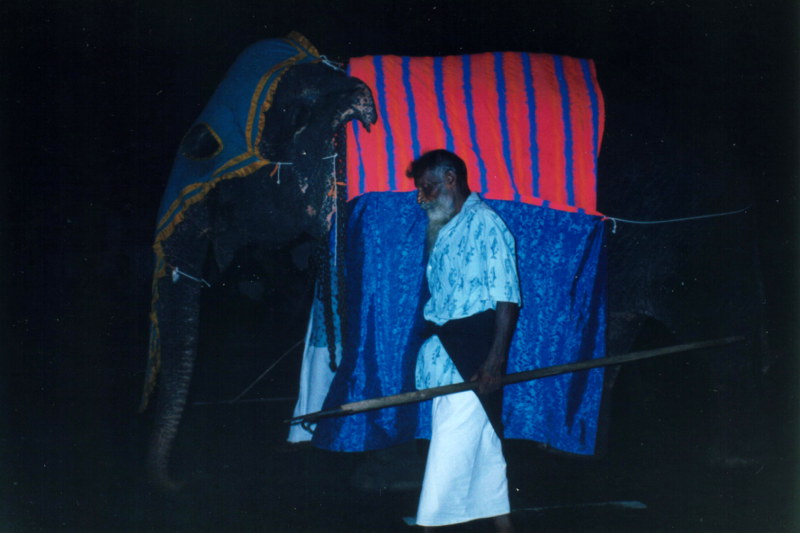Perahera is one of the biggest festivals in Sri Lanka. The word ‘Perahera’ means procession and the festival honours the Sacred Tooth Relic which is housed in Kandy. The tooth reportedly belonged to Buddha and was smuggled away from his funeral pyre in 543 BC. The tooth is paraded through the streets in a gilded casket on the back of a huge tusked elephant (called a tusker).
It is my understanding that there are three different Perahera festivals that occur in Sri Lanka. The biggest and most famous occurs in Kandy and is known as the Esala Perahera. It is a 10-day festival that ends on the Esala full moon (July / August).
Colombo has two Peraheras. The first is the Duruthu Perahera (January) which commemorates Buddha’s first visit to Sri Lanka approximately 2,600 years ago. This procession starts and finishes at the Kelaniya Temple 12 km North East of Colombo.
The second Colombo Perahera is the Navam Perahera which takes place on the full moon (poya) in February. This is the one I was lucky enough to witness. Creon went to the Gratiaen Prize Ceremony to help his mom out while I camped out on the street to watch the parade.
The procession was incredibly colourful. There were fire eaters, twirlers and jugglers, sword fights signifying the fighting between European powers, multitudes of drummers, and long lines of orange robed monks. For the longest time after the monks started to pass I couldn’t see the end of the line.
Next was a plethora of dancers from all over the country. These dancers re-enacted the history of the country starting with tribal dance forms, Kandyan dance, and ending with European styles: Portuguese, Dutch, and English. It is tradition for the different dance troupes of Sri Lanka to get together during Perahera and strut their stuff.
At the end of all the dancing, the King of Sri Lanka made an appearance, followed by servants carrying large gilded umbrellas.
The most impressive part of the procession was the elephants. There are just over 100 elephants used in the parade of various shapes, sizes and decorated in many elaborate costumes. While the procession passed by I sat with a family and ate ice cream. We were on the street where the procession finished so we had to wait for a full hour for it to come to us. When the elephants appeared the small boy from the family was seeing these creatures up close for the first time, like me. We were both so happy and he kept saying allia as I was saying elephant both with the same childlike glee.
The crescendo of the parade is when the tooth appears on the back of the giant elephant that is chosen because of its grace. This elephant is larger than the rest, has huge tusks and many elaborate decorations. On its back is the sacred tooth in its gold casket. The ‘dressing of the elephants’ ceremony occurs earlier in the day and the elephant that carries the tooth is dressed separately from the rest.
